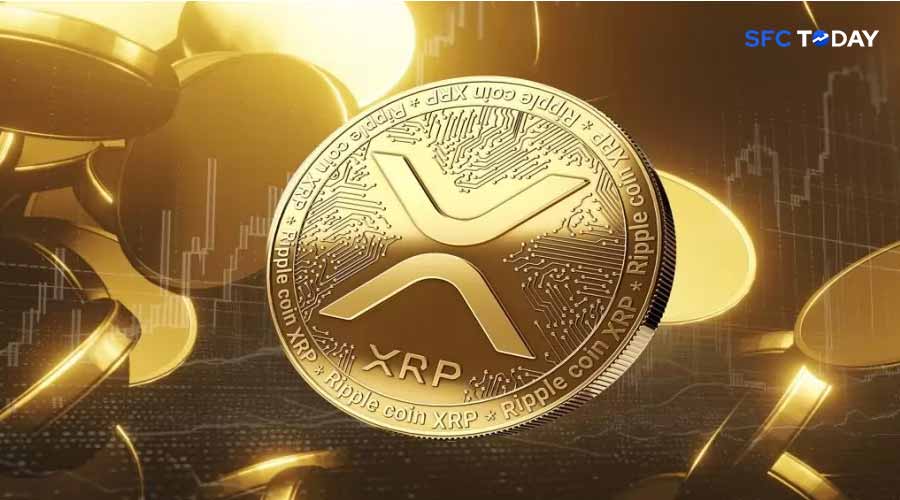Ripple vs. Ethereum: The Battle for Cryptocurrency Supremacy in 2024
The cryptocurrency market is volatile and fast-moving. Thus, investors as well as fans get hooked to it. Among the numerous cryptocurrencies attempting to conquer markets is Ripple (XRP) and Ethereum (ETH).
Ethereum has been at number two in terms of market capitalization for an extended period, but Ripple is constantly rising with a huge potential to challenge the powerful second position.
As of September 2024, Ethereum has reached a market capitalization of around $278 billion, whereas the market capitalization of Ripple is approximately $32.5 billion. This comparison shows that Ethereum has dominated the market vastly.
Each cryptocurrency caters to different types of users and activities in the emerging blockchain space and performs separate functions for different target audiences.
1. What are Ripple and Ethereum
Ripple is among the companies promising to unseat Ethereum if it ever gains as much centrality on cross-border payments and technologically advanced capabilities. In joint working with financial institutions, Ripple provides payment solutions that are fast and come at a minimal cost.
Hence, it becomes a portfolio product that banks and payment providers pursue in their quest for efficient solutions. This places Ripple at the top of the generational competition within the cryptocurrencies.
According to Ethereum, the following applications of Ethereum’s smart contracts and decentralized applications, or dApps, supporting much decentralized finance, or DeFi, projects and NFT marketplaces are making ETH see much demand.
Upgrades will soon include a possible transition to Ethereum 2.0, which will bring improvements in scalability, security, and energy efficiency. Additionally, in October 2024, Ripple plans to launch new crypto storage services to the banks and fintechs.
which would provide operational settings, compliance monitoring, and much improved user interface. This would further expand its offerings and leverage market leadership.
2. Market Sentiment and Investor Confidence
Sentiment in the market and investor confidence affects the values of cryptocurrencies significantly. Ripple has been involved in lawsuits. One was a case by the SEC, alleging XRP to be an unregistered security. Nonetheless, Ripple has still managed to sign deals with financial institutions.
Among them is a June 2024 deal with Clear Junction, which looks forward to making it easy and safe for Ripple payment clients to make instant GBP and EUR payouts.
3. Regulatory Setting
The regulatory landscape influences Ripple and Ethereum a great deal. Ripple’s perpetual court battle against the SEC leaves the big question of its future, judgment that may be in favor of Ripple can help bring up the lift in market value, otherwise, may hurt its value through an adverse judgment.
Meanwhile, Ethereum faces regulatory scrutiny but on the other hand, still draws advantage from its nature of being decentralized and diverse use cases.
The SEC fined Ripple $125 million in August 2024 over the selling of XRP to institutional clients without proper registration; in contrast, Ethereum was dealt with allegations of ‘abuse of power’ and faced probes.
4. Liquidity and Market Dynamics
All currencies require to heighten is liquidity and dynamism of the market. Absorbing liquidity from the market as well as attracting large capitals from other tokens can easily give Ripple a preference position.
The design of this token makes it very quick and affordable for transactions, appealing to institutional investors and financial institutions.
The use of Ethereum pertaining to the wide applications in DeFi projects and NFT marketplaces boosts the liquidity.
High demand from participation in the given ecosystems keeps the capital in the Ethereum network, thus keeping the market value intact.
5. Strategic Partnerships and Adoption
It is through strategic partnerships and adoption that growth and, consequently, market value arise for cryptocurrencies. This can be exemplified by Ripple’s collaborations with the world’s major financial institutions and payment providers, which prove the technology can be applied by many.
The involved partnerships certify Ripple’s technology and, by the same token, are increasing the demand for XRP.
In 2024, Ripple announced strategic partnerships with leading exchanges in launching its stablecoin, RLUSD, into the global market. In this context, it was available on leading platforms such as Uphold, Bitstamp, and CoinMENA.
This is because of the flexibility of Ethereum and the numerous applications that have been created on this platform. Additionally, its growing DeFi and NFT sectors as well as massive acceptance by large firms and developers means that Ethereum has substantial market support.
Conclusion
Ripple and Ethereum each has something unique in bringing distinct advantages in its path toward growing in the cryptocurrency market. Given the focus of Ripple on cross-border payment solutions and strategic partnerships with the major financial players, it seems to have an edge in respect of quick, cheap transactions.
The more diversified offerings by Ripple-and now on to the release of crypto storage services-will further strengthen its competitive position against Ethereum. On the contrary, Ethereum’s mighty position is further strengthened by its solid ecosystem of smart contracts and decentralized applications.
Its upcoming upgrades also promise to take Ethereum to greater altitudes in the marketplace. As both the cryptocurrencies face regulatory issues and thrive upon technological breakthroughs, investors are required to be cautious enough to consider their strengths and weaknesses in the various markets.


